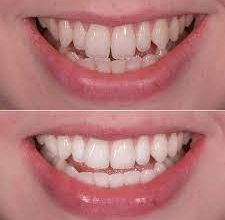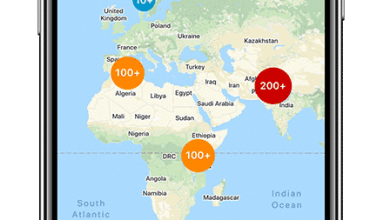DEXA Scan: Purpose, Procedure, and Results

Using a DEXA scan, doctors can determine if a patient is in danger of developing osteoporosis or fracturing their bones. DEXA is the acronym for Dual Energy X-ray Absorption. It is the method in which two X-ray beams target the bones. DEXA scans can identify bone density changes (osteopenia) as little as 1%, making them more precise and accurate than standard X-rays. There are several names for the DEXA scan, such as bone densitometry, central DEXA, or DXA.
Purpose Of DEXA Scan
The main purposes of DEXA scans are to predict future fractures, identify bone fragility, and prescribe medicine to slow down bone loss. It is possible to assess the development of bone loss with repeated DEXA scans. Simply put, evaluating a baseline scan with another scan can demonstrate if bone density is increasing, deteriorating, or remaining the same.
Osteoporosis therapy may also be assessed with a DEXA scan. Also, a DEXA scan may be used to identify the presence of osteoporosis after a fracture has occurred.
DEXA scans may also be necessary if:
- An X-ray shows that you have a fractured or missing bone.
- You are experiencing back discomfort that may be due to a fracture in your spine.
- It has been a year since you have lost more than half an inch of height.
- You’ve lost by one and a half inches in total.
Studies suggest that women age 65 and men age 70 get a DEXA scan at least once in their lifetimes. As estrogen levels decline throughout menopause, women begin to lose bone mineral density earlier than males, explaining the age gap.
As per the Radiological Society of North America (RSNA), the following individuals are often encouraged to get a DEXA scan:
- Women with menopause who are not using estrogen.
- Those who have a family history of hip fractures.
- Pregnant women who smoke
- Post-menopausal women who are tall (above 5 feet, 7 inches) or skinny are at risk
- Men with rheumatoid arthritis or chronic renal illness.
- People who are taking medicines that cause bone loss. These include Prednisone (a steroid that interferes with bone-rebuilding) and anti-seizure other drugs, including Dilantin (phenytoin) and some barbiturates, as well as high-dose thyroid replacement treatments.
- Individuals who have type 1 diabetes, liver illness, renal disease, or a genetic predisposition to osteoporosis are at increased risk.
- Those who have a lot of bone turnover manifest as excessive collagen in urine tests.
- People who have a thyroid or parathyroid disorder, such as hyperparathyroidism.
- Osteoporosis may be a problem for transplant patients because of the anti-rejection drugs they may be receiving.
Procedure
Before having a DEXA scan, there is no need for a person to prepare. On the day of the surgery, they are free to eat and drink as they usually would.
However, persons who are taking calcium supplements will normally need to cease taking them roughly 24 hours before the scan.
Before the scan
The scan will be performed as an outpatient procedure by an X-ray technician. All metal items, including spectacles and jewelry, must be taken off before the scan can occur, and the patient must change into a hospital gown.
The individual who will be subjected to the scan will be lying on their back on the examination table at the commencement of the procedure. X-ray generators and imaging devices will be placed in front of and behind the patient.
During the process
The imaging arm glides gently over the person’s body as a ray of low-dose energy goes through during the scan. The technician would normally scan the hips and spine when assessing bone density. These are typical sites of fractures in persons with osteoporosis.
The finger, wrist, and lower arm may be scanned in certain circumstances. When a DEXA scan is done in certain places, physicians may also ask for additional scans to perform. This test may determine vertebral fracture risk.
When additionally assessing body composition, the complete body undergoes scanning. This sets skinfold thickness at certain places on the body. It is feasible to put the data together to get a body fat percentage using an equation.
Results
Although the timeframe of your DEXA scan may vary depending on the hospital and radiologist who will be evaluating it, you should look forward to hearing back from your healthcare practitioner within a week or two after having the scan completed. Results from a DEXA scan are presented in two ways: a T-score and a Z-score.
- A T-score larger than -1 is typical in nature.
- A T-score ranging from -1 to -2.5 is called osteopenia and suggests a higher chance of developing osteoporosis in the future.
- An osteoporosis diagnosis is made when the T-score is less than -2.5.
In order to compare your findings to those of people of a similar age, ethnicity, weight, and gender are calculated, a Z-score must be calculated. Using this method, you can assess whether or not there is anything uncommon that is causing your bone loss.
As long as the Z-score is more than 2.0, the person’s age is deemed normal. If it is less than 2.0, then the person’s age is considered below normal. Z-scores below -1.5 indicate that causes other than age may be causing osteoporosis. Thyroid problems, drug combinations, malnutrition, cigarette use, and other variables may all play a role in developing this condition.
Key Takeaway
Your doctor will advise you if your findings show osteopenia or osteoporosis, and you will be advised on what you can do to reduce bone loss and remain healthy.
Treatment may be as simple as altering one’s way of life. Your doctor may recommend that you begin weight-bearing activities, strengthening exercises, balancing exercises, or a weight-loss program.
Your doctor may recommend calcium or vitamin D supplements if you have low levels.
If your osteoporosis is further advanced, your doctor may recommend several medications available to strengthen bones and prevent bone loss. Make certain to inquire about any potential adverse effects of any medication.
Changes in your way of life, as well as the use of medications to reduce bone loss, are worthwhile investments in your long-term health. According to studies, it is estimated that 50 percent of women and 25 percent of men over the age of 50 will break a bone due to osteoporosis throughout their lifetime.
It’s also beneficial to keep updated on new research and potential new treatment alternatives.





